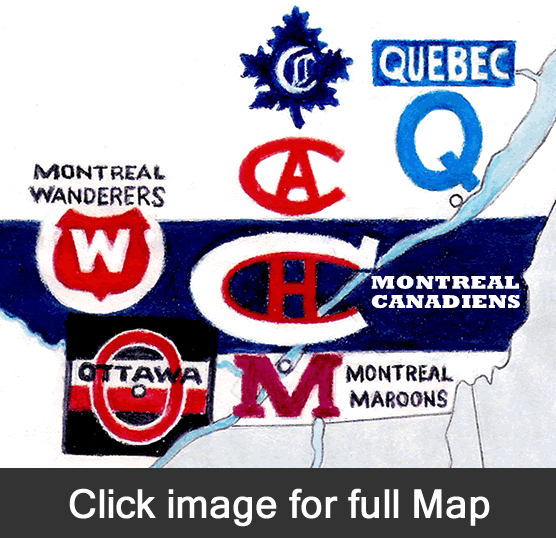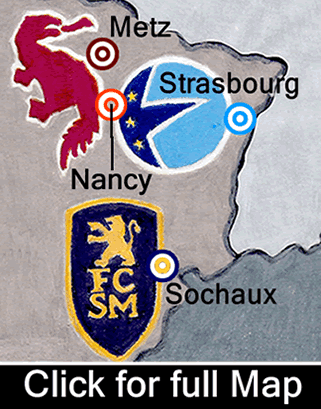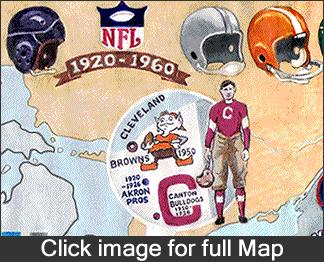


…
…
The National Hockey Association was the precursor to the NHL. The NHA was formed in 1910. In early 1917, one of the teams in the league had to withdraw: The Toronto 228th Battalion. As strange as it must seem, a Canadian Army Regiment had a team in a pro hockey league. When the 228th Battalion was called up to serve in Europe (in World War I), the league reformed as the NHL, without the 228th Batallion, and without the Toronto Blueshirts, whose owner was a disruptive force.
The NHL operated with just 3 teams its first two seasons: the Montreal Canadiens, the Ottawa Senators, and the Toronto Arenas.
The Montreal Wanderers were forced to fold after their arena burnt down in early 1918. The Quebec Bulldogs were forced to suspend operations for two seasons. Quebec re-entered the league in 1919, but moved to Hamilton, Ontario in 1920.
The Toronto club changed its name to the St. Patricks in 1919, and to the Toronto Maple Leafs in Feb. 1927.
In 1924, two new clubs joined: the Montreal Maroons and the Boston Bruins. The Maroons replaced the Wanderers as the English-speaking fans’ team in Montreal. (The Canadiens being the French-speaking fans’ team.) The Boston club was the first American team in the NHL.
During the playoffs in the 1924-1925 season, Hamilton players went on strike for non-payment of post-season wages. The league disbanded the team, and the next season sent the franchise to New York, as the Americans. Also that season, the Pittsburgh Pirates were formed.
In 1926, the New York Rangers were formed. Also, two teams from the defunct Western Hockey League were re-born as NHL teams…the Victoria (British Columbia) Cougars became the Detroit Cougars (now known as the Red Wings), and the Portland Rosebuds became the Chicago Black Hawks. However, the NHL does not recognize these two moves as franchise shifts, even though most players from each WHL team ended up on the two new NHL teams. The NHL now had 10 teams.
However, the league’s progress was impeded by the Great Depression. The first casualty was the Pittsburgh franchise, which moved to Philadelphia in 1930, but folded in 1931. Ottawa suspended operations for the 1931-1932 season, and moved to St. Louis, Missouri in 1934, only to fold in 1935. In 1938, the Maroons folded. In 1942, the NY Americans folded.
To see a graphic representation of the franchise shifts from 1917-1942, scroll up to the box on the top, left, and CLICK.
The period from 1942 to 1967 saw no franchise shifts, with 6 stable teams in the NHL: the Montreal Canadiens, the Toronto Maple Leafs, the Boston Bruins, the New York Rangers, the Detroit Red Wings, and the Chicago Blackhawks. These teams are known, somewhat misleadingly, as “The Original Six.” Misleading because 4 of the 6 were not original.
In the fall of 1967, the NHL entered it’s Modern Era, as it expanded from 6 to 12 teams. To see the 12 teams, scroll to the box on the top, center, and CLICK.
In it’s early days (1917-1926), the winner of the NHL did not automatically win the Stanley Cup.
Originally (1893-1915), the Stanley Cup was operated on a challenge basis, whereby a team, approved by the Stanley Cup Board of Trustees, would challenge the Cup-holder to a competition. It was similar to how pro boxing title matches are organized.
In 1915, an agreement between the NHA and the Pacific Coast Hockey Association was made: their respective champions would meet to play for the Stanley Cup. This format (best in East vs. best in West) carried on when the NHL was formed in 1917, and when another league was formed in western Canada. By 1926, both these western leagues had folded, and the Stanley Cup became the sole property of the NHL.
There were three non-NHL teams during this era to win the Stanley Cup – the Vancouver Millionaires (1915), the Seattle Metropolitans (1917), and the Victoria Cougars (1925).






